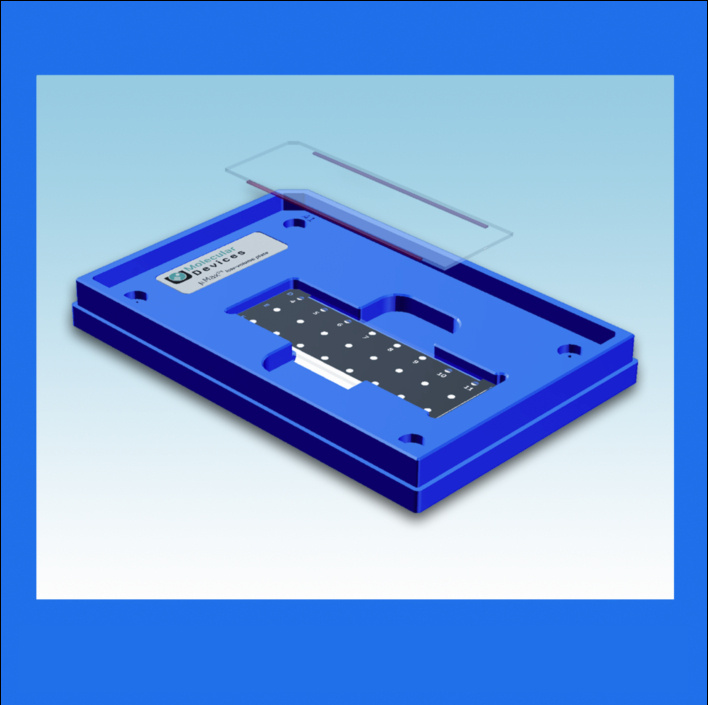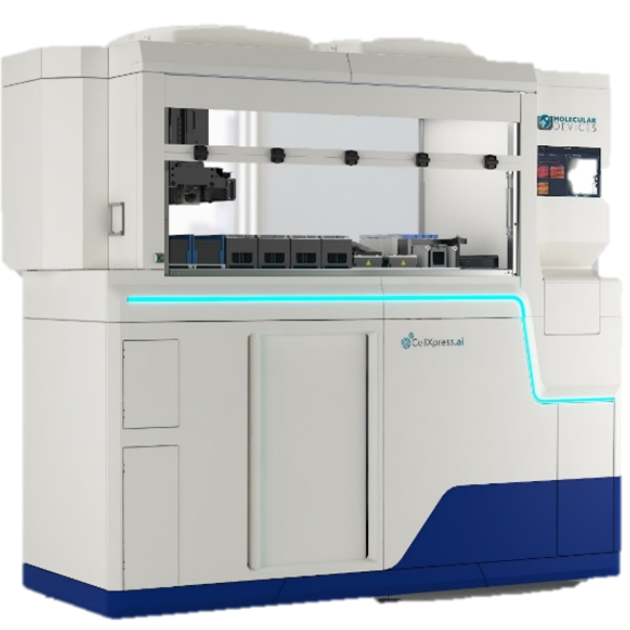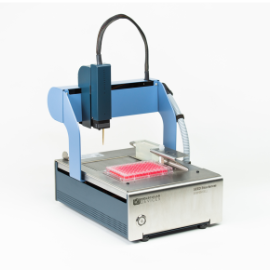Label-free functional cell-based assay technology with the sensitivity to robustly measure endogenous receptor activation in live cells. The system overcomes many of the challenges and limitations found with traditional assay formats.
The CellKey® System is a universal, label-free platform for real-time cell-based functional analysis of endogenous and recombinant receptors. The system enables the measurement of a wide range of targets in a single-assay, including all families of G-protein coupled receptors (GPCRs), as well as tyrosine kinase receptors (TKRs), adhesion molecules, and indirect measurement of ion channel activation. In particular, the system is a major breakthrough for accurate monitoring of Gαi- and Gαs-coupled GPCR receptors, as it overcomes many of the challenges and limitations found with the traditionally available assay formats.
The underlying technology of the system is cellular dielectric spectroscopy (CDS) an impedance based measurement that eliminates the need for labels, such as tags, dyes, or specialized reagents. By eliminating the requirement for labels, the CellKey System streamlines assay development by reducing the number of steps to be optimized, and allows users to develop one standard assay solution for multiple target classes, regardless of pathway.
The system was designed to meet the needs of drug discovery scientists-- from target identification and validation through lead optimization. It is sensitive enough to monitor ligand-mediated activation of endogenous receptors expressed in adherent or non-adherent cell lines, including primary cells. The benefit of this is the ability to generate more physiologically relevant data than obtained when using genetically and chemically manipulated cells.
While traditional technologies measure only discrete intracellular events, such as Ca2+ flux or cAMP fluctuation, the CellKey System measures the integrated response of the whole cell to receptor activation. By presenting a more complete picture of the complex pathways activated, scientists gain a better understanding of the cellular response. For example, upon detecting GPCR activation, the CellKey System generates robust and reproducible response profiles that are characteristic of Gαs-, Gαi- or Gαq- GPCRs. This qualitative data can be used to identify and deconvolute the pathway(s) through which receptors transduce their signals, and enables detailed interpretation of the mechanism of action (MOA) of lead compounds.
The CellKey System is a fully integrated solution consisting of the instrument with on-board temperature control and internally integrated fluidics, a custom microplate for detection, and an extensive software suite. The integrated pipettor head allows the system to add ligand while simultaneously capturing the immediate cellular response. This feature contributes to the robustness and reproducibility of the CellKey System response profiles. The system software manages both data acquisition and the information-rich, real-time kinetic data analysis. Additionally, the system has been designed to integrate with most available automation options.
Features
|
Feature
|
Benefit
|
|
Sensitive to endogenous receptors
|
Enables reliable and robust measurements of endogenous cellular receptor activity, even low density receptors which may be undetectable with other functional assays.
|
|
Label free detection
|
Expensive tags, dyes, or specialized reagents are not required. This reduces the resources required for assay development and eliminates the incidence of undesirable interactions with labels.
|
|
Universal platform for functional cell surface target assays
|
Single platform and assay methodology measures GPCRs, TKRs, adhesion molecules, and indirectly measures ligand-gated ion channels, among other targets.
|
|
Measures all cell types
|
System measures disease and biologically relevant cell lines and primary cells, including adherent and non-adherent cell types.
|
|
Measures all classes of compound efficacy
|
Comprehensive detection of agonists, antagonists, partial and inverse agonists, and allosteric modulators in a native setting in a single assay.
|
|
Information-rich kinetic response data
|
Reproducible and robust qualitative pathway-specific cell response profiles.
Probe complex receptor signaling, pathway diversity, and identify the underlying mechanism of action (MOA) of lead compounds.
|
|
Streamlined assay development
|
Single-assay format for multiple receptor types regardless of signal coupling mechanism.
Reduces the resources spent on assay development, such as time consuming and costly biological manipulation of cell lines and the optimization of labeling reagents.
|
|
Integrated, internal pipettor head
|
Simultaneous addition of ligand and/or compound while measuring the fast kinetic cellular responses, delivers reproducible and robust response profiles, with no loss of information.
|
|
Automation-friendly
|
Designed for easy robotic integration with small and large scale automation platforms.
|
|
Ease of use
|
The CellKey System is a fully integrated, flexible, and intuitive platform.
|
Specifications
|
Measurements
|
|
|
Assay type:
|
Homogeneous, label-free, cell-based
|
|
Principles:
|
Impedance
|
|
Frequency range:
|
1 kHz-10 MHz
|
|
Mode:
|
Kinetic measurement: simultaneous compound addition and measurement across all wells
|
|
Data acquisition rate:
|
2 or 10 second update rate
|
|
Microplate Formats
|
|
|
Cell plate format:
|
96-well proprietary cell plate
|
|
Compound plate format:
|
96-well and 384-well compound plates and reservoirs
|
|
Deck positions:
|
One read (cell plate) position
Two compound plate positions
One tip loading position
|
|
Fluidics
|
|
|
Pipettor format:
|
One 96 well pipettor head, simultaneous transfer
|
|
Pipettor range:
|
0.5-200 μL
|
|
Pipetting increments:
|
0.1 μL
|
|
Dispense speed:
|
Adjustable
|
|
Pipettor height:
|
Adjustable
|
|
Additional standard features:
|
Compound mix capability
|
|
Throughput
|
|
|
Assay development:
|
4 plates/hour (15-minute read time)
|
|
High-throughput:
|
8 plates/hour or better (5-minute read time, plus automation)
|
|
Temperature Range
|
|
|
Analysis range:
|
Ambient +5° to 37°C (below 20°C, ambient +6°)
|
|
Ambient range:
|
15-30oC
|
|
Physical Characteristics
|
|
|
Benchtop
|
Yes
|
|
Instrument weight:
|
128 kg/282 lbs
|
|
Instrument dimensions (in):
|
28 (H) x 33 (W) x 23 (D)
|
|
Instrument dimensions (cm):
|
70 (H) x 85 (W) x 58 (D)
|
|
Power consumption:
|
630 W
|
|
Power source:
|
100-120/200-240 V (self-adjusting)
50/60 Hz
|
|
Computer
|
|
|
Processor:
|
Minimum: Intel® Pentium® 4 3.6GHz processor, 1GB RAM
|
|
LCD monitor:
|
20-inch
|
|
Operating system:
|
Windows® XP
|
|
Regulatory
|
|
|
Regulatory:
|
For Research Use Only. Not for Use in diagnostic procedures
|









